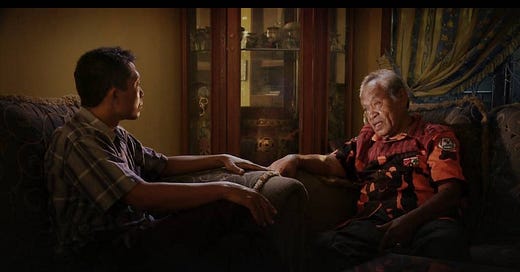Joshua Oppenheimer on ‘The Look of Silence’ and Immersive Filmmaking
Joshua Oppenheimer is a singular filmmaker. Masterfully, his vision is articulated not solely on screen but within the viewer himself, in that space between the limit of words and intuition. Reverberating at gut-level, his documentaries are wholly engulfing. There is no swimming to shore.
His latest film, The Look of Silence, is a companion piece to the …
Keep reading with a 7-day free trial
Subscribe to Nonfics to keep reading this post and get 7 days of free access to the full post archives.



